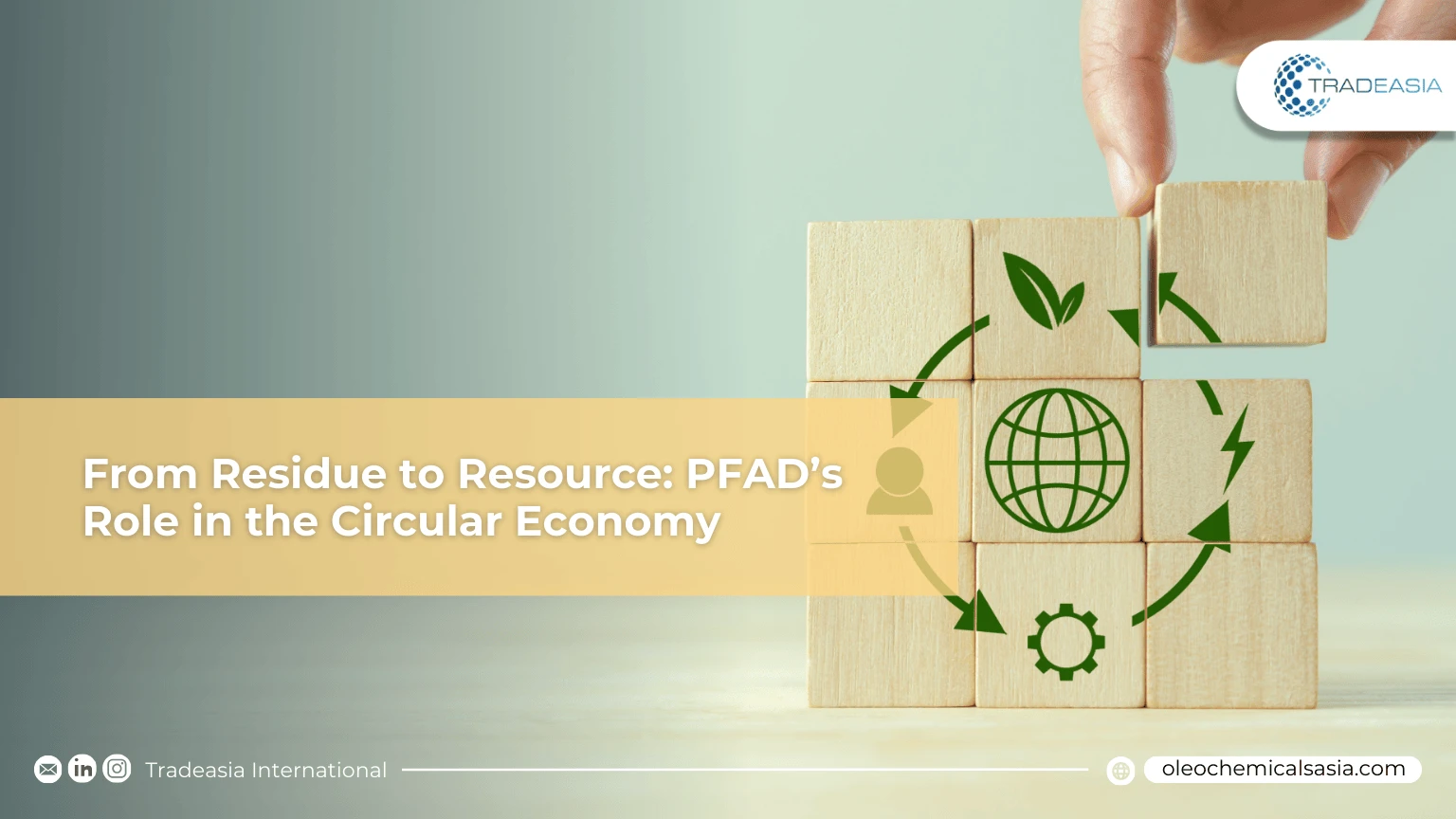Article
16 September 2025
From Residue to Resource: PFAD’s Role in the Circular Economy
Palm Derivatives

Table of Content
- Maximizing Value from Every Single Drop
- The Regulatory Multiplier Effect
Article
16 September 2025
Palm Derivatives

The conversation around industrial by-products is changing, and Palm Fatty Acid Distillate (PFAD) is leading the charge. It has transformed from a footnote in the refining process to a powerful case study in the circular economy, showcasing how resource efficiency can create immense environmental and economic value.
Transforming industrial residues into high-value global commodities is the heart of the circular model, but it demands a sophisticated and reliable supply chain. As a key player in the global oleochemical trade, Tradeasia International specializes in building these critical connections, ensuring that valuable materials like PFAD are seamlessly integrated into markets where they can achieve their full sustainable potential.
The scale of this circular success story is immense. From the global processing of crude palm oil, the industry effectively captures and valorizes 4-5 million tonnes of PFAD annually. This prevents waste on a massive scale and creates a multi-billion-dollar, low-carbon resource without utilizing a single additional hectare of land. This zero land-use footprint is a crucial advantage, offering a clear path to compliance with stringent new measures like the EU Deforestation Regulation (EUDR). It proves that profitability and planetary health are not mutually exclusive goals but can be powerfully interconnected.
PFAD’s classification as a "processing residue" under Annex IX of the EU's Renewable Energy Directive gives it a unique and powerful market advantage. This status allows PFAD-based biofuels to be "double-counted" towards renewable mandates in many member states, effectively doubling its compliance value for fuel blenders. This regulatory multiplier creates a structural demand pull estimated at over 500,000 tonnes annually into the EU alone. For corporations, the benefits are equally compelling, as integrating certified PFAD can lead to a quantifiable 15-20% improvement in reported Scope 3 emissions, making it a strategic tool for achieving ambitious ESG targets.
Sources:
We're committed to your privacy. Tradeasia uses the information you provide to us to contact you about our relevant content, products, and services. For more information, check out our privacy policy.
Leave a Comment